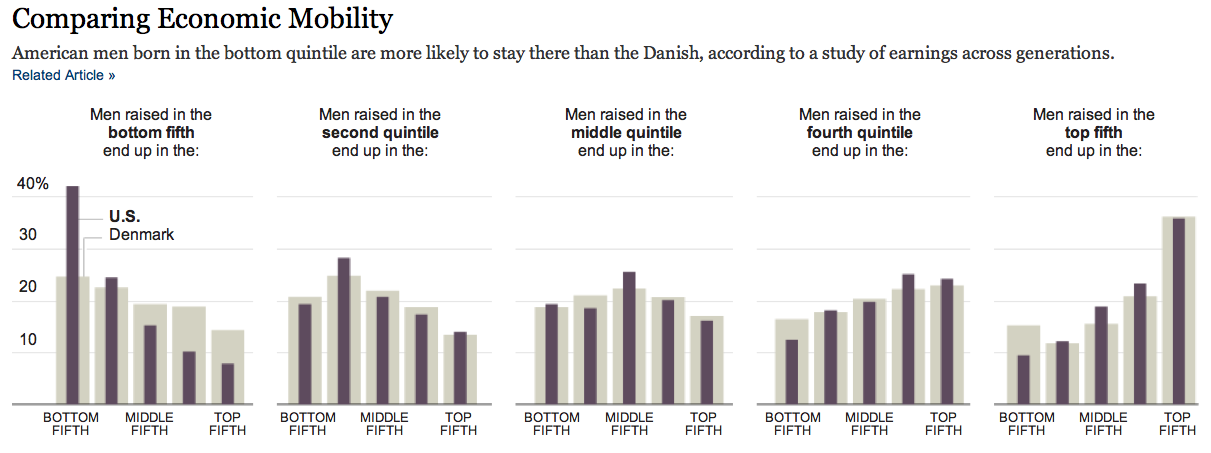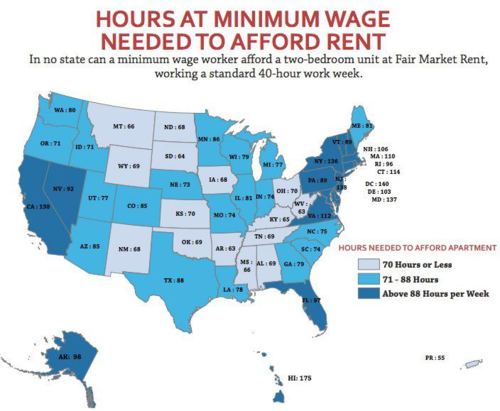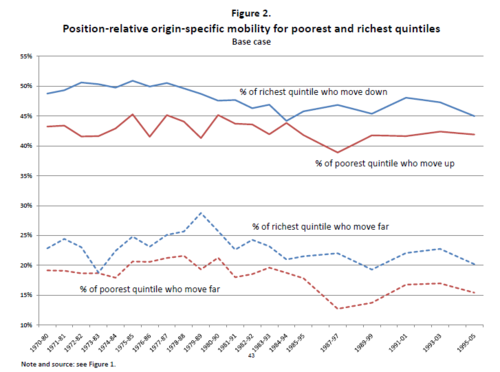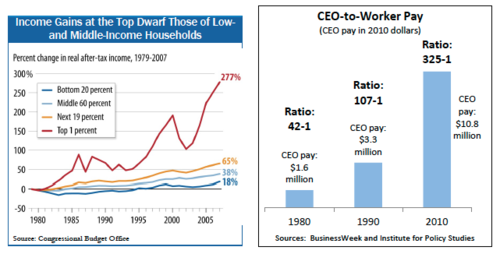I have not written about the #Occupy movement in a while, owing somewhat to the disappointing failure of Occupy Vancouver to resurface at the beginning of this month. However, I have not stopped believing in the validity and necessity of the cause. I recognize that there is a Sisyphian task of convincing the general public – like a frog in a pot of gradually warming water – that there is an urgent problem that needs addressing. Most people would rather retreat to trite platitudes about ‘laziness’ and ‘entitlement’ and ‘handouts’ instead of bothering to take a moment and look around and realize that something is really rotten. The myths about hard work and achievement that this society was built on are hollow in the face of reality, but like so many other things, it is easier to perpetuate the myth than make the necessary change.
There are few people on television I find more odious and more historically unnecessary than Sean Hannity. I say ‘odious’ for reasons that I imagine are obvious to anyone who’s watched him interview anyone that isn’t Ted Nugent. He hops from ‘question’ to ‘question’ (they are actually not questions, but straight-up lies thrown at a guest who is not given a chance to respond before the next salvo is launched), reducing the interview to little more than a televised bullying session. I say ‘historically unnecessary’ because men like Hannity have always been around, arrogantly strutting and trying to pass their stereotypes off as wisdom. This is perhaps no better displayed than in this video:
To Mr. Schultz’s credit, he appeared to take Hannity about as seriously as he deserved. Schultz refused to allow himself to be talked over, and did his level best to expose the utter banality of the host’s complete disinterest in actually having a productive conversation. He got in a couple of good ‘zingers’ as well. Of course, Hannity can’t have that, so he goes on the full attack at the end, and then as though to cement his image as nothing above a swaggering high-school bully, he throws a football around. I’m surprised he didn’t call Schultz a ‘dorkwad’ and try to give him a swirlie.
At any rate, while I doubt there are many of you who disagree with the Occupy movement, there may be some who don’t quite understand what all the fuss is about. Here’s a brief list of only some of the reasons to #Occupy.
1. Standard of living has gone way down
Using the year 2000 as the numerical base from which to “zero” all of the numbers, real wages peaked in 1970 at around $20/hour. Today the average worker makes $8.50/hour — more than 57% less than in 1970. And since the average wage directly determines the standard of living of our society, we can see that the average standard of living in the U.S. has plummeted by over 57% over a span of 40 years.
There are no “tricks” here. Indeed, all of the tricks are used by our governments. The green line shows average wages, discounted by inflation calculated with the same methodology for all 40 years. Obviously that is the only way in which we can compare any data over time: through applying identical parameters to it each year.

Doing the same job today makes you less money than it did in the 1960s. Yes, the absolute number on your paycheque has never been higher, but the number of things you can do with that paycheque is about equal to what it was since the Second World War.
2. ‘Get a Job’ doesn’t cover it
Despite Mr. Hannity’s unbelievably annoying repeated suggestions that Mr. Schultz should just “get a job” (ignoring, of course, that unemployment among youth is twice the national average and there simply are no jobs for him to ‘go and get’), the graph above shows that having a job is no safeguard against debt. In fact, you’d need to have two jobs just to make rent. Mr. Hannity brags about how he worked his way up from being a dishwasher or some ridiculous lie of a story, but he was 29 in the 1990s, when the living wage was actually much higher. It was possible to support yourself on a dishwasher’s salary then. Now, you’d have to spend 16 hours a day with your hands in a sink just to keep a roof over your head.
3. Getting out of poverty is getting more difficult
Over time, the number of people who have been able to rise above the crushing yoke of poverty has been shrinking. The above graph terminates in the 1990s, relatively stable. Take a look at the situation now:

Those born at the bottom stay there, and as the effective power of wages shrink, more and more people are finding themselves swimming in the shallow end of the economic pool.
4. Not everyone is suffering equally
The level of income inequality has not been so high in the US since immediately before the Great Depression. After decades of high marginal tax rates built the infrastructure (both physical and human) that created the modern United States, the idea that the wealthy should pay what they can changed from an American value to a radical socialist agenda to crush ‘job creators’. The marginal tax rate is back where it was in the 1920s. So is income inequality. Taxes won’t get lower for these ‘creators’ – where are the jobs?
Your job is worth less and less, but somehow the money is found to make sure that those who need it the least are being rewarded the most. Mr. Schultz said that capitalism is broken – he is right. The system we have now is very much unlike the capitalist system that Mr. Hannity condescendingly describes. Those with the power and influence reward themselves not for making a better product, but for finding better ways to take money out of the pockets of those lower on the ladder.
5. We’re winning
Despite the fact that they have all the money and political influence, people are starting to recognize that the true power lies with them. By refusing to obey the rules of the rigged game that is contemporary capitalism, by taking to the streets and demanding that changes be made, people are exercising the most potent form of power for change. This has the status quo spooked, because they are not used to large groups of dissidents. That’s why they’re trying to stir up dissent like the convicts and rapists being sent to Zucotti. While it might sound paranoid, it doesn’t exactly sound unlikely either:
Hundreds have been arrested during the Occupy Wall Street protests, but photographer Alexander Arbuckle’s case was the first to go to trial – and after just two days, the Manhattan Criminal Court found him not guilty. Supporters of the OWS protest movement have already hailed the ruling as a major legal victory. Arbuckle was arrested on New Year’s Day for allegedly blocking traffic during a protest march. He was charged with disorderly conduct, and his arresting officer testified under oath that he, along with the protesters, was standing in the street, despite frequent requests from the police to move to the sidewalk.
But things got a little embarrassing for the NYPD officer when the defense presented a video recording of the entire event, made by well-known journalist Tim Pool. Pool’s footage clearly shows Arbuckle, along with all the other protesters, standing on the sidewalk. In fact, the only people blocking traffic were the police officers themselves.
Tyranny only has a few tricks, like evidence planting and abusing authority to fracture group solidarity. However, they’re finding it harder and harder to get away with that, because a) people are wise to the tricks, and b) everyone is a journalist. It’s only a matter of time before police forces the world over recognize that they live in a very different world – a world in which they are not feared, and they are not respected, and they cannot hide behind the shield of their office.
There are so many more reasons to #Occupy. This is just a short list of some of the financial reasons. I haven’t even touched the potential to occupy racism, sexism, political corruption, corporate greed, cronyism… there is no end in sight to the improvements we can make if we continue to pay attention and ignore the Sean Hannitys of the world.
Like this article? Follow me on Twitter!





In the first figure, the one inflation-adjusted on the year 2000, I wonder if it’s just a *coincidence* that all three tracking indices coincide in that year, and their trend lines reverse to either side. If it’s not a coincidence, it seems a bit disingenuous–I’m not 100% up to speed on the accounting tricks which economists use to come up with graphs like that, but the implication of the graph could be entirely an artifact of which “zero year” was chosen for the calculations. Would we get a similar fulcrum effect for any year so chosen?
“I haven’t even touched the potential to occupy racism, sexism, political corruption, corporate greed, cronyism”
An additional strength of course is that they are all inextricably linked. One may have their dog in a different race than another, but we’re all going after the game-riggers together.
Shadowstats is not a credible source for statistics. It is run by a conservative hack with an economics BA and and an MBA who used to run a chainsaw business before he got into consulting for goldbugs and Fed conspiracy theorists…
Here’s a (sympathetic) profile: http://www.sfgate.com/cgi-bin/article.cgi?f=/c/a/2008/05/25/BU6K10JTEF.DTL
Here’s a rebuttal of his claims (although it is from the two people affiliated with the bureau of labor statistics, so it might not really carry water in the debate): http://www.bls.gov/opub/mlr/2008/08/art1full.pdf
And here’s what Paul Krugman (liberal, won a Nobel, etc.) thinks real wages are. Declining yes, but nothing like what you have up there: http://krugman.blogs.nytimes.com/2012/02/07/wages-and-values/
You would get the convergence for any year chosen as the zero year. It is just a statistical artifact.
I also have a comment with some links (to substantiate) in moderation, but the gist of it is: Shadowstats is not a credible source. It’s run by a conservative hack.
I looked at the third and fourth figures. Am I interpreting them wrong when they seem to indicate that social mobility has gotten better since the 90s? In the third graph, the percentage of poorest-quintile people who move up is around 42, ergo the percentage of those who stay there is 58. In the fourth graph, the bottom fifth-raised end up in the bottom fifth only a little over 40 percent of the time.
You’re *sort of* reading it wrong. The third figure measures mobility over the course of a decade, and that last bump where mobility goes up represents what was happening during the 90s, with local peak mobility throughout the 90s (either 91-01 or 93-03 depending on the quintile and distance of movement). As the endpoint moves further into the 00s, the pattern is trending back down. The graph doesn’t have the seven most recent years, so we don’t have a clear picture of the 00s as a decade.
Sorry, I definitely misread your question. You’re correct that, assuming the same method for each graph, relative mobility (movement between quintiles) has increased somewhat.
There’s a problem with using this metric as a measure of market health/fairness, however. As income distribution becomes more skewed toward the top earners, smaller fluctuations in income result in larger relative mobility. If the top quintile represents 50% of total income, one’s income has to change more in real-dollar terms in order to move two or more quintiles than if the top quintile represents 80% of total income. The range of incomes that characterize each quintile shrinks as income inequality between the top and bottom earners increases (that was part of what was happening in the 90s with the Dot Com bubble).
Income mobility doesn’t really provide much useful information, unless one buys Neo-Classical Economic Theory as a good general model of human economic behavior (it’s not*) and thinks that being able to move up or down in relative economic standing is a worthy goal in and of itself (as far as I can tell, that’s only true if one thinks large-scale income inequality is a good thing – if we all have near-equal income, for example, mobility is effectively meaningless, as a fluctuation of a thousand dollars might move one between the top and bottom quintiles).
*The simplifying assumptions NCE makes – the concept of ceteris paribus, or all things being equal – in order to be at all usable render it completely disconnected from actual human behavior and decision-making processes, as things are never, ever equal due to the influence of cultural and temporal context; NCE only works to describe sexless, genderless, raceless, nationality-less, shared-language, perfectly healthy, perfectly perfectly mobile (in terms of global mobility such that one can always move between localized markets if necessary – this is derisively and accurately known as “flat-Earth economics”, since it views the planet’s markets as without grades that inhibit mobility on the basis of various vectors of privilege), etc. and completely rational actors with access to complete and accurate information about every decision. The (unmarked/uninflected-by-any-aspect-of-privilege-or-marginalization) Rational Actor is an absurd fantasy, rendering pretty much all NCE, which relies on this model of human decision-making, a farce.
That we have this staggering evidence, and yet can still easily run into libertarian “skeptics” (most notably Micheal Shermer and Penn Jillette) who advocate for a hell of a lot more of the same policies that have gotten us here (or worse, like an outright return to 1920s policies), suggests to me that we need more skeptical politics. Even for atheists, politics still gets treated somewhat like a sacred cow =/
This is an awesome post! Now we need to illustrate the other 50 reasons as well, and make that many more posts like this one.
Are you for hire by any chance ? 🙂 Also we could use something like this to illustrate the same problems in Canada. Wait, aren’t you in vancouver? Then why write about the states?
While I’m certainly sympathetic to Occupy, Figure 2 doesn’t seem quite right. Maybe things really cost differently in the States, but $7/hr x 70 hr/week x 4 wk/mth = almost $2k. That’s a lot higher than rent is anywhere I’ve lived in Canada…you could get a reasonable 2 bedroom place for $1k in most medium-sized cities here.
Are you sure that figure doesn’t include other costs of living?
I ran those numbers too; I’ve seen this chart before and it’s preposterous. What I think they calculated it on is the 33% standard that many landlords have, so they tripled the average rent to come up with their numbers.
That’s still questionable, since I know plenty of people who spend more than a third of their income on rent. Also, why would one minimum wage worker need a two bedroom? Most people who make minimum wage are not in child raising years (some are, of course, but they don’t represent the majority). They should have used a 1 bedroom, and made the numbers less misleading.